Going to Great Lengths in Rack Design
Posted on Jul 24, 2020
So what exactly is cantilever design, and when is it the ideal storage rack?

Frank Lloyd-Wright often employed cantilever design in his architecture.
Modern architecture has used the concept of a cantilever design in some of its most memorable structures: Frank Lloyd Wright’s Fallingwater in Pennsylvania, the Guggenheim Art Museum in New York City, and the seating and roof supports for many sports stadiums.
Basically, a cantilever design consists of a horizontal beam or assembly supported along only one edge and projecting or extending outward from that edge.
Though not formally introduced to the technical aspects of cantilever racking, most people are familiar with cantilever racks from having walked through the lumber section of their favorite do-it-yourself (DIY) retail box store, or the warehouse portion of a furniture warehouse-store. So what makes cantilever rack systems special?
Key Components and Basic Styles:
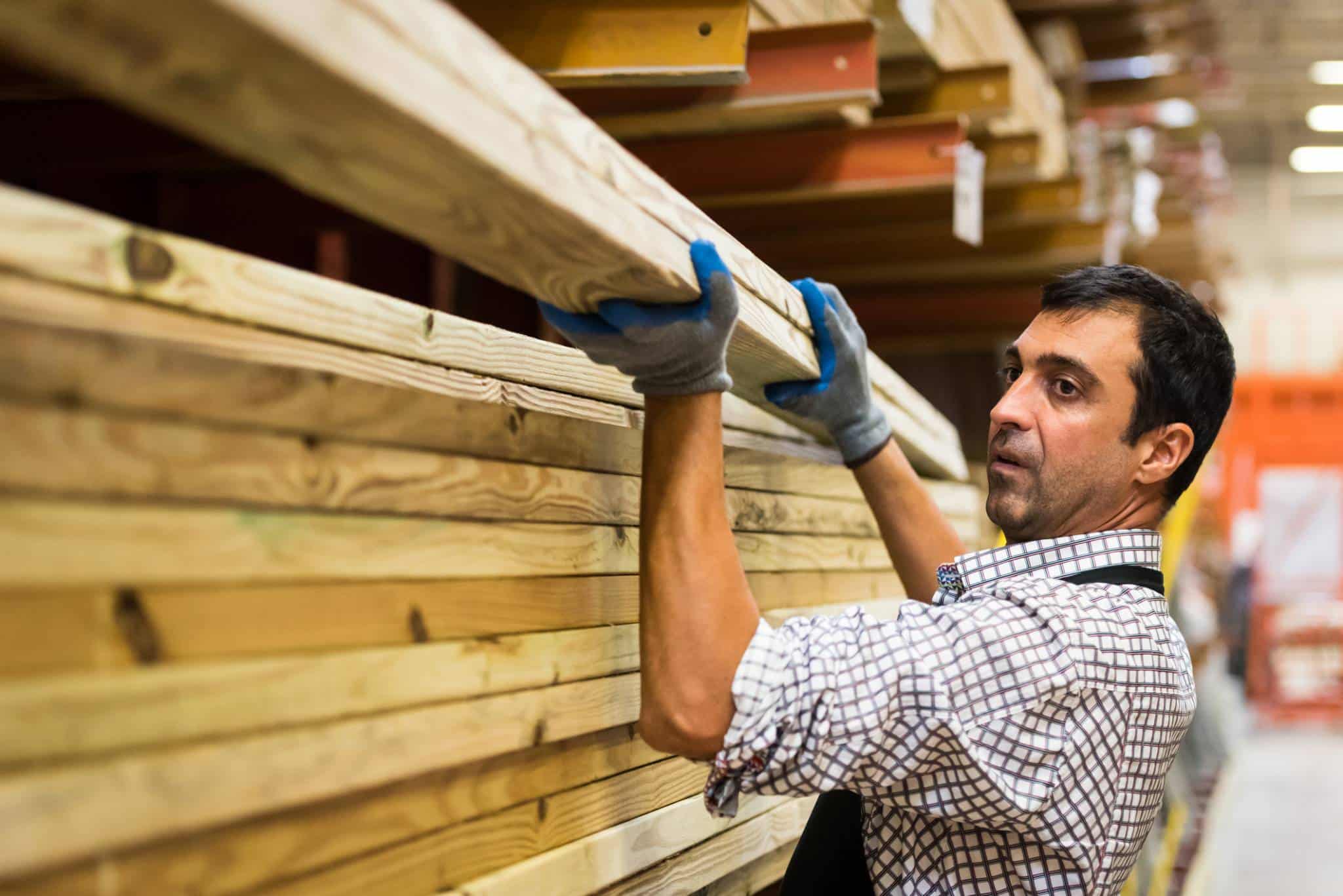 Cantilever racks consist of five key components:
Cantilever racks consist of five key components:
- The vertical columns to which the arms and bases are attached,
- Base sections which attach to the bottom of the columns while aligning with the arms above, support product, and stabilize the vertical columns in the cross-aisle direction,
- Vertically-spaced arms located above the bases that extend outward in the cross-aisle direction from the face of the columns that support product,
- Bracing between the columns that stabilizes the columns in the down-aisle direction, and
- Optional accessories that augment the utilization of the cantilever racking system.
The columns, bases, and arms are typically made from brake-formed sheet steel or hot-rolled structural steel. Brake-formed columns may be straight-shaped from bottom-to-top or have a tapered-shape (deeper at the bottom and narrower at the top). The down-aisle spacing of the columns is based on the type of product being stored and its weight.
The vertical spacing of the arms is based on the height of the product being stored, the required ‘lift-off’ clearance for loading and unloading of product, and the vertical height of the arms.
Cantilever racking can be either ‘single-sided’ or ‘double-sided’, ‘free-standing’ or ‘top-tied’. 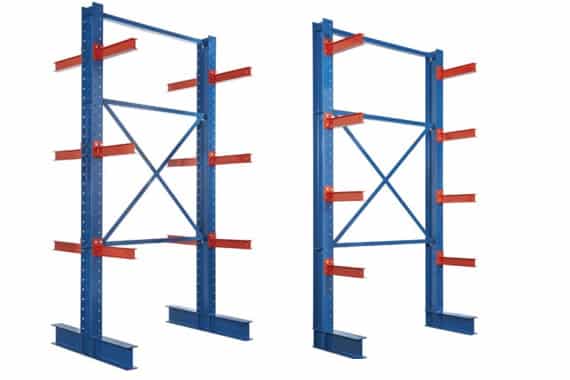
For ‘free-standing’ cantilever racks, the cross-aisle stability of the columns is provided by the bases which are either bolted to or welded on the bottom of the column. ‘Free-standing’ systems rarely exceed 30’ in height and are typically loaded and unloaded using a counter-balanced forklift.
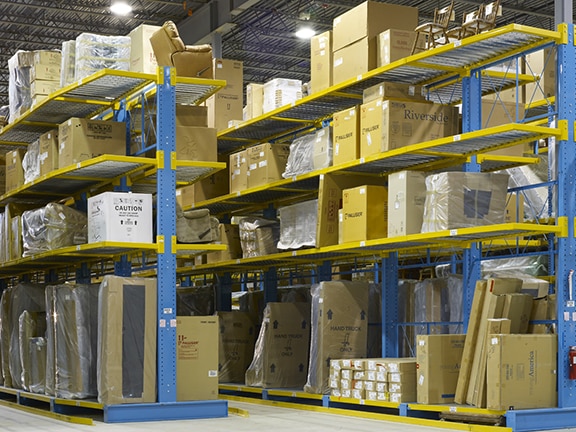
Cantilever rack allows flexible storage lengths for products such as furniture.
In addition to the bases, ‘top-tied’ systems have cross-aisle tie beams at the top of the columns providing additional strength and stiffness to the columns in the cross-aisle direction. These systems often exceed 30’ in height and typically are used with lighter loads such as furniture storage (vs. lumber or pipe storage). ‘Top-tied’ systems are typically used in conjunction with narrow-aisle man-aboard forklifts. Narrow-aisle forklifts typically require some form of floor guidance system.
When to Use Cantilever Racking:
The key to good warehousing is to
- maximize storage within the space available
- Provide quick access and visibility to the products being stored
Cantilever racking is ideal when there are multiple stock-keeping units (SKU’s) of differing lengths/widths. Industries that use cantilever racking frequently include furniture storage (chairs, love seats, couches, bed frames) and building supplies (lumber, sheet metal, bar stock, piping, and conduit).
While selective (pallet), drive-in/drive-through, push-back, and pallet-flow racking function at their best when the SKU’s being stored have a consistent width and depth, they are not very space-efficient when the length/width of the stored product varies. Since cantilever racks are typically designed for single-depth storage, visibility of and easy access to product are two other great features of cantilever racks.
Designing a Cantilever System
There are multiple factors that affect the final design of a cantilever racking system:
In general:
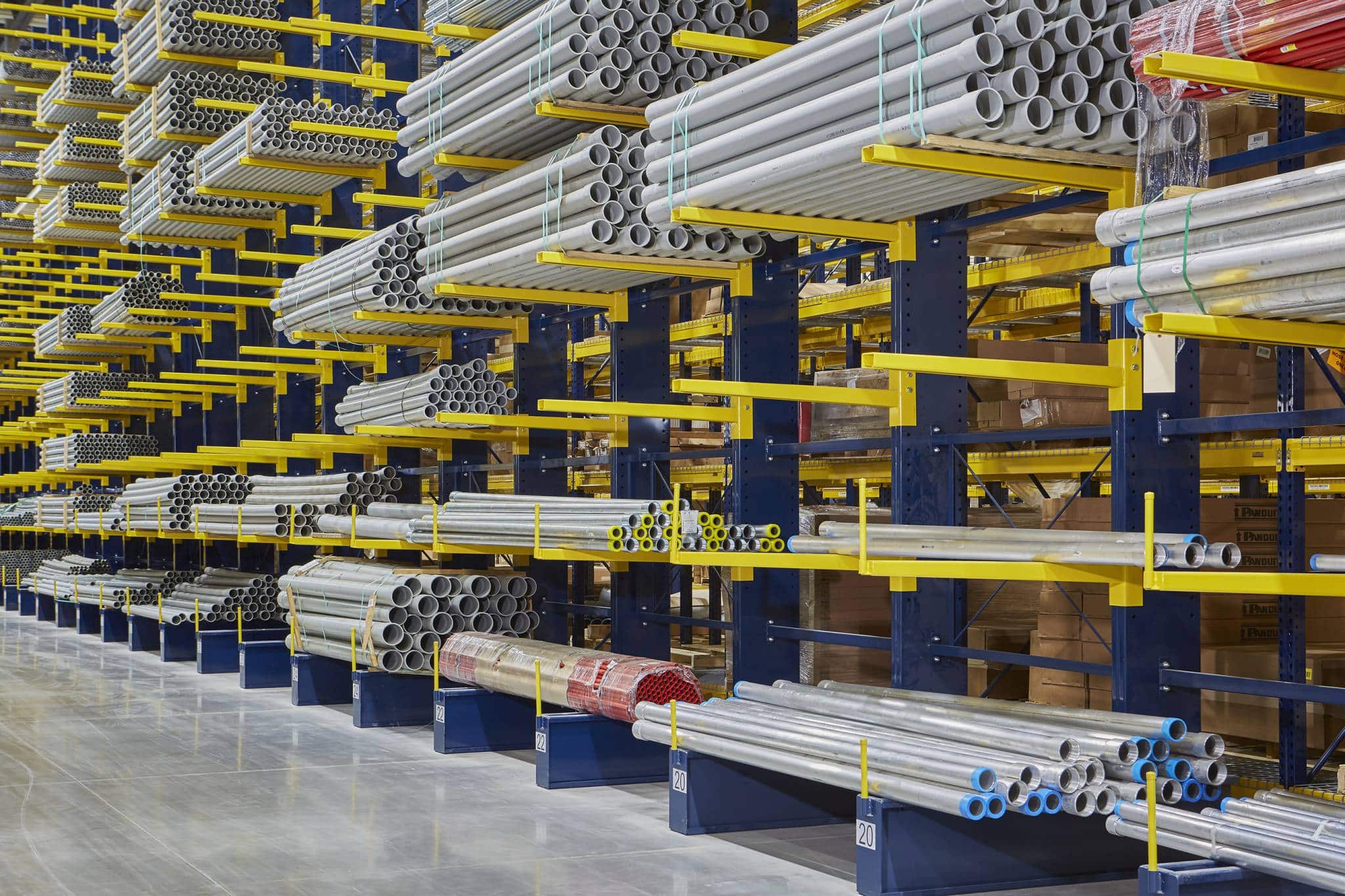
“Steel King helped us maximize our storage within our warehouse footprint, so we’re able to efficiently store and access product,” said Lloyd Fabry of Werner Electric Supply.
- Stored product weight and size
- Lift and aisle-width limitations of the forklifts
- Clear height to the ceiling
- Available floor footprint for the racking and pick aisles
- Strength of the existing slab-on-grade
- Seismic (earthquake) design requirements
- Fire code requirements
For racking located within an existing warehouse or industrial facility:
- Location and size of the building columns
For racking located outside on a concrete pad:
- Are roofing and side walls to be attached to the racking?
- Wind, snow, and rain design requirements
Steel King Cantilever Racking
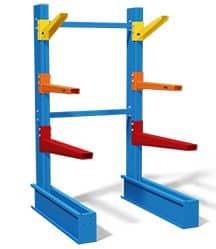
Cantilever – standard
Steel King Industries offers four specific types of cantilever racking:
- Light-duty cantilever racks in which the columns are comprised of Steel King’s roll-formed tubular upright posts. This product line is typically ‘free-standing’ and is used for light-load applications such as hand-loading of individual boards or pipe. Column heights generally don’t exceed 10’and maximum arm loads rarely exceed 500 pounds.
- Standard-duty cantilever racks in which the columns are comprised of two brake-formed cee-shapes. This product line is typically ‘free-standing’ and is used for medium-load applications such as forklift loading of bundled plywood, lumber, or pipe. Column heights generally don’t exceed 20’and maximum arm loads rarely exceed 3000 pounds.
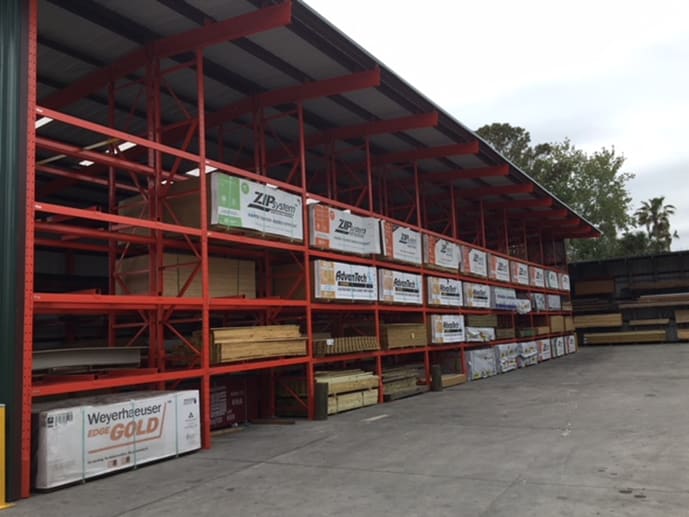 Heavy-duty I-beam cantilever racks in which the columns consist of a single W-shaped wide-flange I-beam. This product line is typically ‘free-standing’ and is used for heavy-load applications such as forklift loading of bundled plywood, lumber, or pipe. Column heights generally don’t exceed 30’and maximum arms loads rarely exceed 4500 pounds.I-Beam cantilever has the strength to provide the building structure for rack-supported facilities.
Heavy-duty I-beam cantilever racks in which the columns consist of a single W-shaped wide-flange I-beam. This product line is typically ‘free-standing’ and is used for heavy-load applications such as forklift loading of bundled plywood, lumber, or pipe. Column heights generally don’t exceed 30’and maximum arms loads rarely exceed 4500 pounds.I-Beam cantilever has the strength to provide the building structure for rack-supported facilities.- Furniture cantilever racks in which the columns are comprised of Steel King’s roll-formed tubular upright posts. This product line is typically ‘top-tied’ and is used for furniture storage with the heavier loads such as appliances and pressboard products placed on the bases. These systems typically have a floor guidance system with man-aboard hand-loading and unloading. Column heights generally don’t exceed 40’and maximum arms loads rarely exceed 2000 pounds.
Steel King Industries can design customizable cantilever racks for optimal customer satisfaction, both indoor or outdoor systems, accounting for weather and seismic requirements.
| REQUEST A QUOTE |
